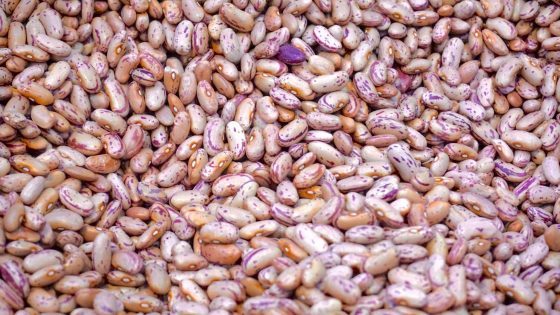Spending less on groceries equals going hungry, right? Wrong. I spend less than average on groceries, but I do it without skipping meals or using coupons. We eat delicious, filling meals every day of the week. If you feel like your food spending is out of control, you can change it. But like other areas of money management, reducing grocery spending requires a new way of thinking.
Nowhere in this article will I share coupon secrets or teach you extreme frugality tricks. But I will teach you how to rethink what food you put into your body and what it costs. If you are committed to cut your grocery spending, it will require new habits and some learning. You’ll probably have to learn some new recipes, plan meals ahead, and give up some convenience foods. New results require new actions. It’s hard to change habits, but the results will be long lasting and beneficial to your overall financial and physical health.
What Should You Reasonably Spend on Food for Your Family?
If you’re curious what you should be spending for your family size, the USDA (United States Department of Agriculture) publishes a report each year on what the average families spend on food. You can check it out here to see the specific numbers for your family size. In short, they found that in 2018, families of four (two parents, two children ages 2-5) spend between $563.40 and $1100.00 per month. If you are consistently at the top of that range, it’s a sign that you have room to cut your spending significantly.
Personally, my grocery shopping habits were formed by growing up in a thrifty and health-conscious household. Those thrifty habits have stuck with me, and now I’ve dialed in my grocery spending to $300.00 per month for myself and my husband and our 1-year-old daughter. That’s well below the average national cost of $494 for two adults in our age group. I shop at a King Soopers, which is a Kroger chain similar to Fred Meyer.
*Note: We don’t have any serious food allergy or diet restrictions and are all in good health. Your doctor should be the source of your dietary advice, and this post should not be considered dietary or medical advice.*
Why Does Saving Money on Groceries Matter?
So, why even try to cut your grocery spending? Let’s take a hypothetical example. If a family who was spending $1100 every month cut their spending down to $563 they would have an extra $537 each month, or an extra $6,444 per year. And if they used that chunk of cash wisely every year, by investing it in a 401k or IRA, after 10 years they would have $100,819! (This example assumes an aggressive 8% yearly gain on the investment, but even with a modest 5%, the result is still an impressive $85,104. Do your own calculations here.)
That’s right, cutting your grocery budget could make you $100,000 richer. Even if you only cut your spending by $150 a month instead of $500, that will still add up to $28,000 over 10 years. Small financial changes have big effects over time. If you struggle to find the motivation to cut your spending, seeing the long-term effects in real numbers is incredibly motivating.
How I Think About the Cost of Food
Food holds many purposes in my life: fuel for my body, social activity, hobby, comfort, indulgence. Out of those, fuel is the primary reason to eat food. Social activities, hobbies, comfort, and indulgences can all take different forms, but I only get calories by eating food. Obvious, right? But it’s important to think through the reasons why I spend my grocery dollars. Simply being aware of conscious or unconscious reasons for purchases can create change. I’m not saying I never buy indulgences, but I do try to be aware of the reasons for the ice cream in my cart.
After establishing my reasons for purchasing an item, I think about food in terms of cost per calorie and quality of calorie. When I buy food, I am buying calories, but every calorie is not created equal. Depending on the kind of food, the calories will have varying nutrition and cost. Because I want to be healthy and wealthy, I choose low cost, high nutrition calories. Like any other purchase, I want the highest value for the lowest cost.
Foods I Avoid (Or Buy Only Occasionally)
Now that you’re thinking of your grocery list in terms of purpose, cost, and nutrition, let’s look at the list of foods I generally avoid. These foods fall into two camps: high cost per calorie and low nutrition per calorie. I don’t go hard-core and ban these foods completely, but I do buy them infrequently. Doing this cuts my grocery spending and keeps me healthy.
Examples of high cost per calorie foods:
- Specialty meats (fresh seafood, organic beef, bison, etc.)
- Out-of-season or specialty produce (I’m lookin’ at you, little packages of raspberries for $4.99!)
- Individually packaged or novelty snacks (pretty much everything branded as convenience food, health food, or a seasonal novelty)
Examples of low nutrition per calorie foods:
- Cold cereal
- Candy
- Chips and snack foods
- Sugary drinks (soda, juice, chocolate milk etc.)
- Boxed dinners (mac and cheese, Pasta Roni, etc.)
- Frozen foods
- Desserts (ice cream, donuts, Oreos, etc.)
- Bacon
- Deli meat
A note on a few of these items:
I realize that cold cereal is a sacred cow to many people. If that’s something you can’t give up, try mixing your cereal 50/50 with plain rolled oats. It will make the box last longer and give you a boost of fiber and protein. Also, high-quality meats and fresh seafood are worth the money, and I do enjoy cooking and eating them for special occasions, e.g. birthdays and holidays.
Foods I Buy: What’s on My List?
So now that we’ve essentially ruled out half the grocery store, what is left that you CAN buy?! Lucky for you and me, the other half of the grocery store has all kinds of delicious, low cost/high nutrition foods. Here’s an example of what’s usually on my grocery list:
Examples of low cost/high nutrition foods:
- In-season fresh vegetables
- Fruit on sale (I look for $1.50/lb or less)
- Rolled oats
- Dry beans
- Raw almonds/sunflower seeds/cashews/pumpkin seeds/chia seeds
- Brown rice/quinoa
- Olive oil
- Frozen vegetables
- Whole wheat pasta
- Whole wheat bread
- Standard cuts of meats on sale (Usually chicken, occasionally ground beef or fish)
- Natural peanut butter
- Pantry staples (flour, oil, sugar, herbs and spices, condiments, etc.)
- Eggs
- Cheese
- Yogurt
- Tofu
- Milk
A note on a few of these items:
- I only buy yogurt in the big tubs and plain. Individual containers of flavored yogurt are full of added sugar and marked up insanely high.
- Additionally, I only cook meat for one meal each week. Most of our protein comes from the significantly cheaper plant-based sources on my list, which reduces our spending, improves our health, and saves the planet.
- I love cooking with dry beans. In the morning, I put 2 cups of dry beans in my crock pot with 5 cups of water and 1 teaspoon each of onion powder and salt, and after 8 hours on high, they are tender and ready to eat for dinner. Or throw the beans in a pressure cooker and they’re done in about 1 hour! Easiest food ever, and it only costs pennies.
What Do We Eat Every Day?
Our meals have been routine since we got married six years ago; luckily I married a man who doesn’t mind eating the same thing every day.
Breakfast: Eggs and toast, or oatmeal, or yogurt with fruit and oats
Snacks: Nuts, fruit, baby carrots and homemade hummus, homemade muffins or bread
Lunch: Peanut butter and banana sandwiches or leftovers
Dinner: Latin foods, stir fries, sandwiches, curries or soups. I love a meal planning app called Mealime. It’s free, and it helps me find quick and healthy recipes for dinners.
We eat out about once a month, and it’s usually at Cafe Rio. I plan it into our grocery budget for the week, and we’ll go on a Tasty Tuesday and split a $5 salad.
Final Thoughts
I love food. I love cooking it, eating it, and spending time with my family and friends around the dinner table. My primary motivation for choosing basic healthy foods is good health. Preserving my long-term health through good eating habits is one of the most financially smart decisions I could make for my future. The side-effect of that choice is a lower monthly grocery bill, which increases our financial peace and stability in the short term. If you’re struggling to control your food spending, think of the long-term benefits. With some practice and dedication, you can rein in your grocery spending and improve your financial and physical well-being now and for the future.









